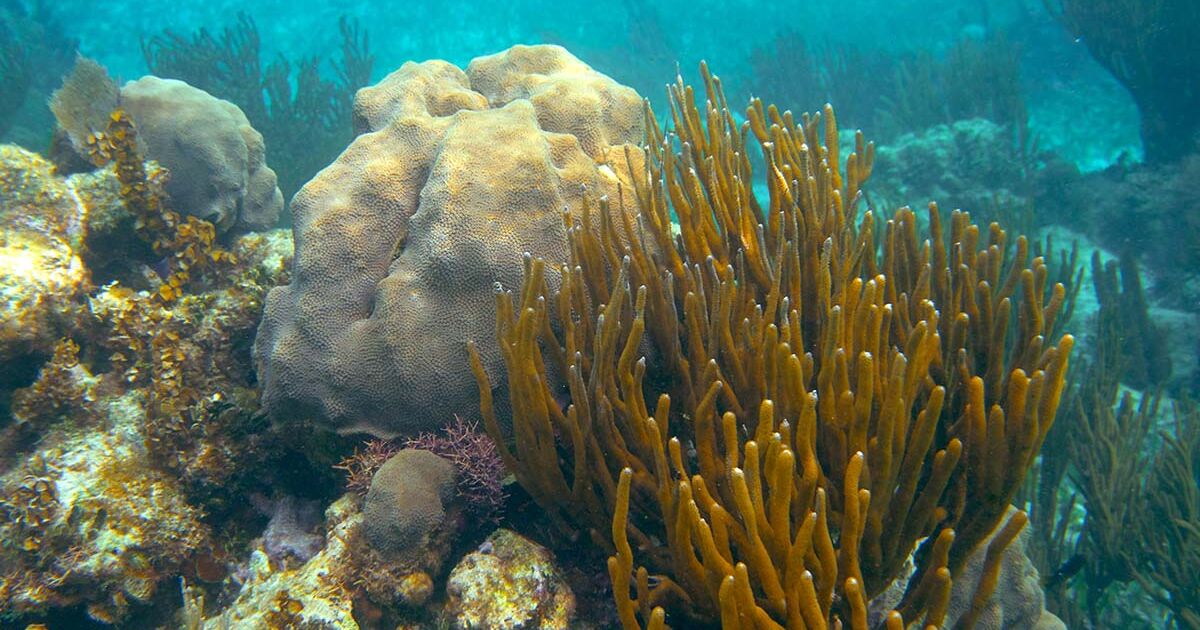How Insurance is Protecting the Mesoamerican Reef #scuba #scubadiving #freediving #ocean #underwater
Although coral has been around for millennia, the impacts of climate change—like ocean acidification and increasingly severe storms—as well as destructive fishing practices and coastal overdevelopment are weakening the ecosystem. It’s harder than ever for corals to withstand hurricanes, prompting Quintana Roo, in the northeast tip of Mexico’s Yucatán Peninsula, to insure about 100 miles
Although coral has been around for millennia, the impacts of climate change—like ocean acidification and increasingly severe storms—as well as destructive fishing practices and coastal overdevelopment are weakening the ecosystem. It’s harder than ever for corals to withstand hurricanes, prompting Quintana Roo, in the northeast tip of Mexico’s Yucatán Peninsula, to insure about 100 miles of coastline. This included part of the 620-mile reef, which stretches along the Caribbean coasts of Mexico, Belize, Guatemala and Honduras.
The insurance policy protects not only the area’s natural spaces, but also its economy — as a whole, the Mesoamerican Reef brings in about $6.2 billion per year through activities including tourism and commercial fishing. Many of those dollars are spent in Quintana Roo, which is home to popular destinations including Cancún and Tulum.
Quintana Roo’s regional government took out the policy in 2019 through Swiss Re, which had partnered with the Nature Conservancy to design the reef insurance. Like people insure their homes against storm damage, the reef was insured against hurricanes classified as a Category 3 or above (meaning storms with wind speeds of at least 100 knots).
The policy’s first payout came in October of 2020, after Hurricane Delta hit. The storm toppling over bathtub-sized stands of endangered corals and leaving other fragments strewn across the seafloor. About $850,000 was allocated for reef repairs, which allowed for strategic reef restoration efforts and for daily life in the region to return to normal as quickly as possible.
“Having this insurance policy is really like water in the desert,” Efraín Villanueva Arcos, the environment secretary for Quintana Roo, told the New York Times when cleanup efforts were underway. Without the policy, he said, it would have been a struggle for the government to fund the repair work.
Now, a year later, the region continues to be battered by storms — as do reefs across the world. As governments are slowly adopting policies to mitigate climate change, is natural disaster insurance and rapid restoration response the key to the long-term survivability of coral reefs?
Critics of the approach argue that insurance reduces wildlife to a commodity.
However, as Fernando Secaira, a specialist on climate risk and resilience at the Nature Conservancy who helped bring about the insurance policy, tells the Times, “if we want to move the needle on how we are impacting nature, we need to move into economic terms.”
Quintana Roo will soon be one of many insured areas along the reef system: Local nonprofit MAR Fund, backed by the German InsuResilience Solutions Fund, is taking out a second policy to cover other sites in Mexico as well as parts of the reef in Guatemala, Belize and Honduras.
“How important is this from 0 to 10? I’d say 10,” Claudia Ruiz, Reef Rescue Initiative coordinator at MAR Fund, tells Reuters. “You’re not only helping the biodiversity of the reef but also the coastal communities that depend on the reef.”
Source link







Comments
Comments are disabled for this post.